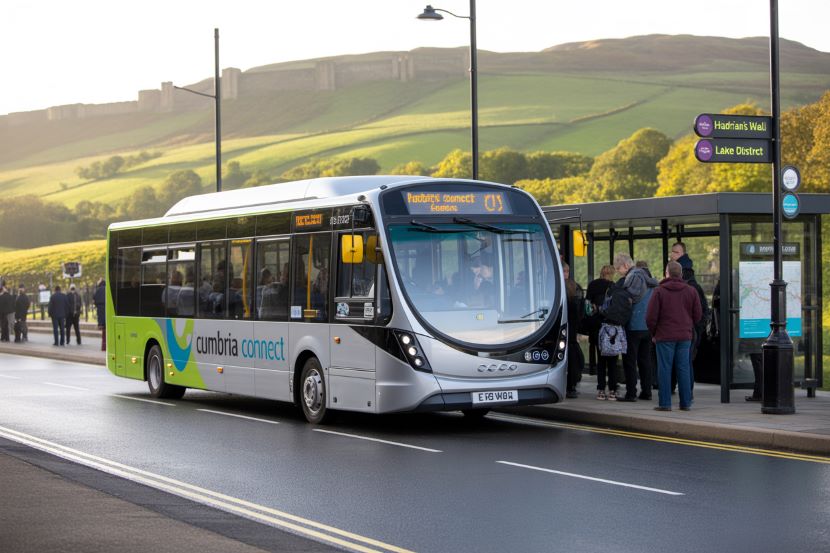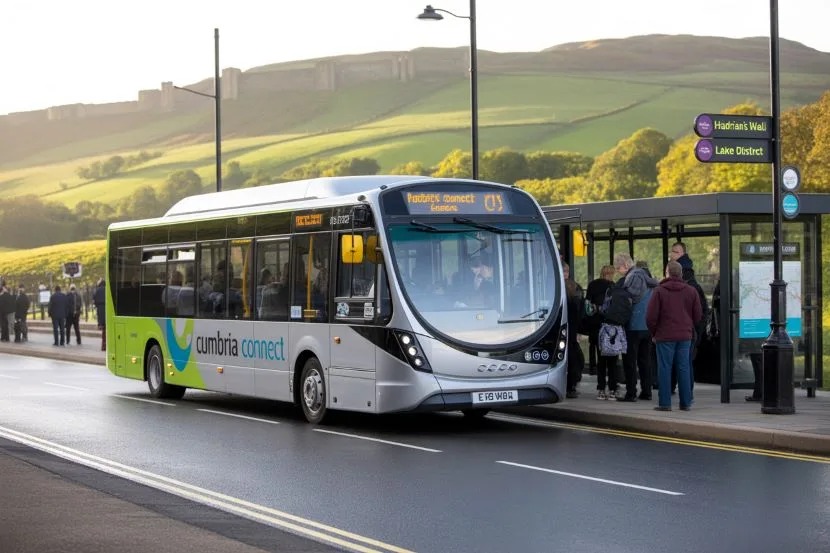Published on
August 9, 2025 |

Cumbria is set to experience a major overhaul of its public transportation system as the Cumberland Council launches a bidding process for new bus routes. With the support of a £3.5 million funding boost from the government’s Bus Services Improvement Plan, this expansion aims to improve access to areas where services are limited or unfeasible. For locals and tourists alike, this marks a significant opportunity to benefit from enhanced connectivity in the region.
The council’s initiative could reshape travel options, providing better access to key attractions and essential services across the area. However, to ensure the success of these services, it’s crucial that both operators and the public engage actively.
Expanding Access to Tourism Hotspots
Among the proposed new routes, some will directly benefit tourists eager to explore Cumbria’s rich history and natural beauty. Potential routes include connections from Carlisle to Hadrian’s Wall, one of the UK’s most famous historical landmarks, and from Cockermouth to the West Cumbria Hospital, which will benefit both tourists and healthcare visitors. Additionally, routes such as the Bootle to Millom and a new Whitehaven Town Loop will help travelers explore more of the region.
For tourists visiting Cumbria, these expanded services will make it easier to access the region’s top destinations, such as the Lake District, the coastal town of Whitehaven, and the historic sites along Hadrian’s Wall. If these routes are successfully introduced, public transport will become a much more convenient option for travelers looking to explore the area without the need for private transport.
A Win for Business Travelers
For business travelers visiting Cumbria, the new bus services will offer more reliable transport options between key locations. The proposed routes not only aim to improve leisure travel but also focus on linking critical commercial areas like Carlisle and Maryport. These routes could make business trips smoother by providing convenient and affordable travel between conference venues, hotels, and other business hubs.
What’s at Stake: Ensuring Long-Term Success
The council has made it clear that the new routes will only be sustainable if there is strong operator involvement and consistent public use. The council has emphasized that if these services are not used regularly, they risk being discontinued, leaving gaps in the region’s transport network. Therefore, it’s critical that both locals and tourists take advantage of the services to ensure they remain a fixture in the area.
Residents are encouraged to make use of the services as their travel choices directly influence the future of the routes. The council’s message is clear: public engagement will play a pivotal role in shaping the long-term availability of these services.
Steps to Take: How to Make the Most of the New Bus Routes
For those planning to use the new services, here are some quick tips to ensure a smooth journey:
- Check Availability: Keep an eye on the official council website and transport providers for updates on new routes and service schedules.
- Use the Services Regularly: If you’re a local, using the buses frequently will help ensure that these services stay in place. For tourists, planning your trip around the availability of these services can enhance your experience.
- Book in Advance (Where Possible): Some routes, especially to popular tourist sites, may become crowded. Booking your seat or planning your journey during off-peak hours could save time.
- Stay Informed on Road Closures: For those relying on public transport during busy times, it’s essential to stay updated on any roadworks or temporary closures that may affect bus routes.
What Tourists Should Know
For visitors to Cumbria, especially those coming for the Women’s Rugby World Cup or other major events, the new routes could provide a much-needed boost to local transport options. Public transport could be the best choice for tourists who want to avoid the stress of driving, particularly in areas with limited parking or narrow roads. Here’s what visitors can expect:
- Improved Accessibility to Key Sites: Routes like Carlisle to Hadrian’s Wall and Cockermouth to local hospitals make accessing cultural and healthcare services much more straightforward.
- Affordable and Convenient Travel: With new routes being added to underserved areas, travel will become more affordable and accessible for all, especially those looking to explore multiple areas without the need for a private car.
- Sustainable Travel Options: As part of a broader commitment to sustainability, these services will also help reduce the environmental impact of increased tourism by promoting public transport over private car use.
Challenges Ahead: What the Council Is Watching
Despite the significant funding, some routes may not attract enough bids due to market constraints. These include limitations on the availability of vehicles or drivers, which could delay the launch of certain routes. The council has acknowledged that while there is enthusiasm for the initiative, the practical challenges of ensuring the availability of buses and drivers could impact the scope of the expansion.
Conclusion: A Bright Future for Cumbrian Travel
The expansion of Cumbria’s bus services marks a turning point in improving local and tourist travel options. The £3.5 million investment will provide much-needed connectivity for residents and travelers alike, helping to support the tourism industry while enhancing the region’s transport infrastructure. By making use of these new services, both locals and visitors can contribute to the success of this initiative, ensuring that future generations can continue to enjoy accessible, sustainable transport options across Cumbria.
Key Points to Remember:
- £3.5m funding from the Bus Services Improvement Plan will enhance public transport.
- Proposed routes include key tourist destinations like Hadrian’s Wall and the Lake District.
- New services aim to boost tourism and business travel in the region.
- Public engagement and regular use of services are essential for their long-term success.
- Tourists can expect improved access to popular sites and sustainable travel options.







